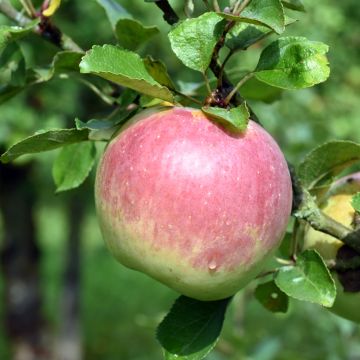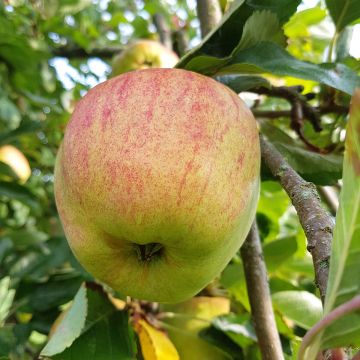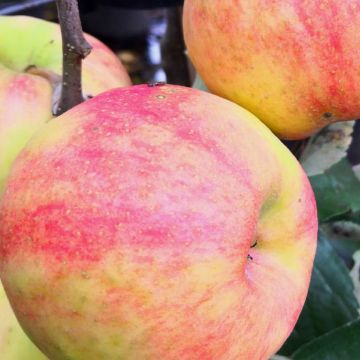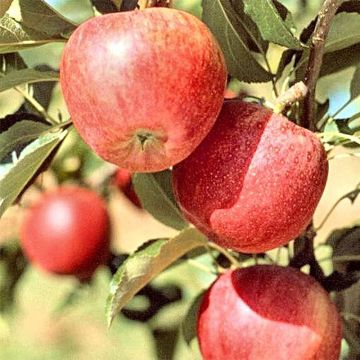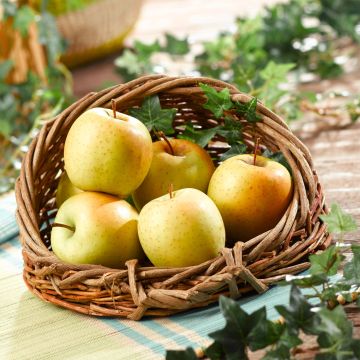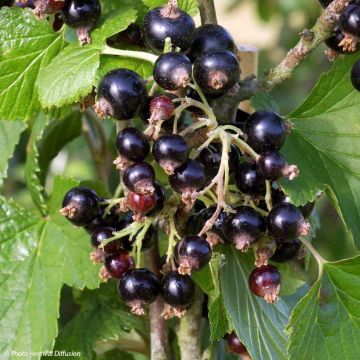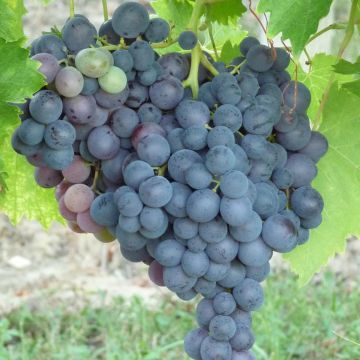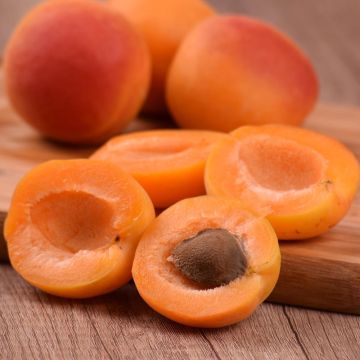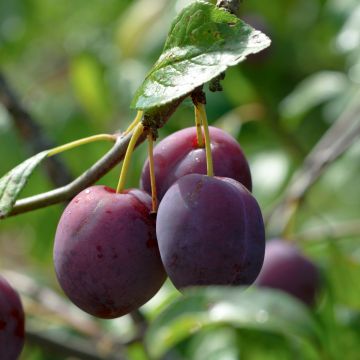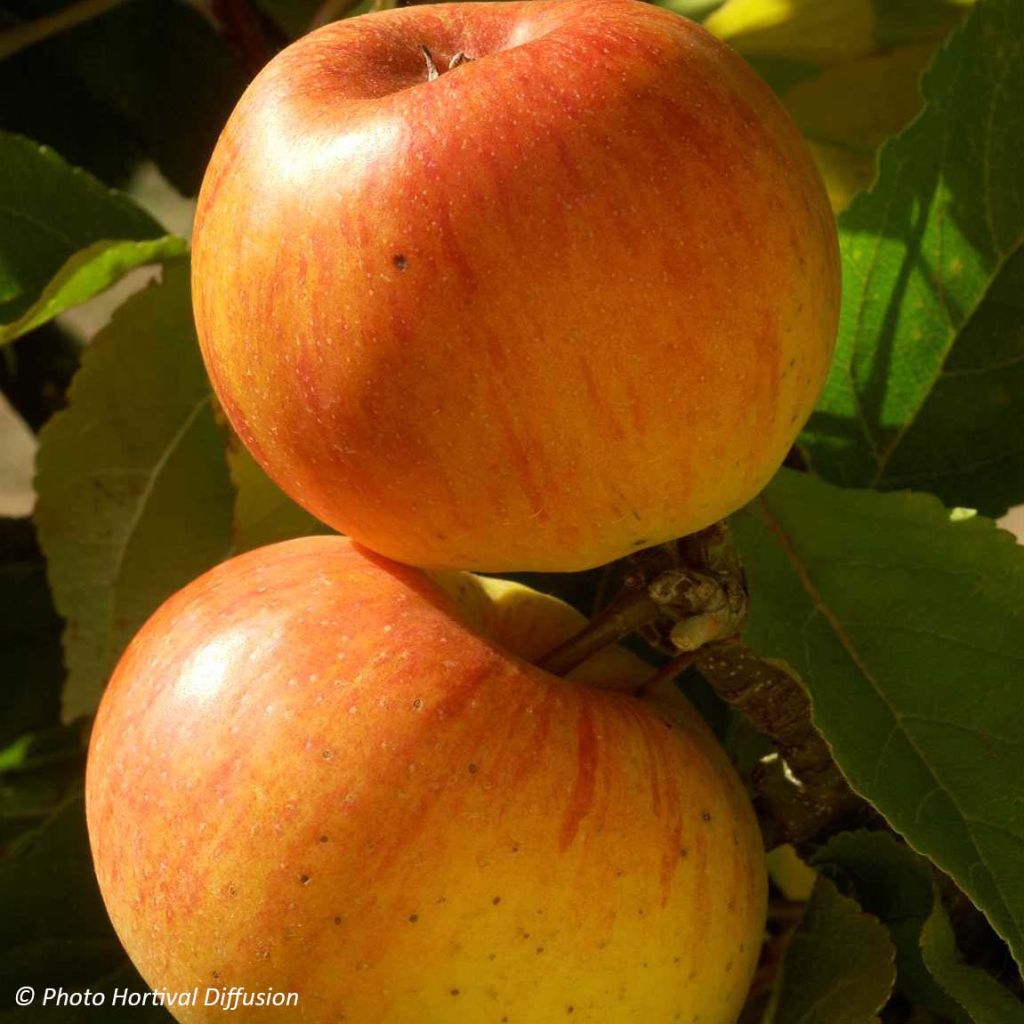

Apple Tree Reinette de Caux - Malus domestica
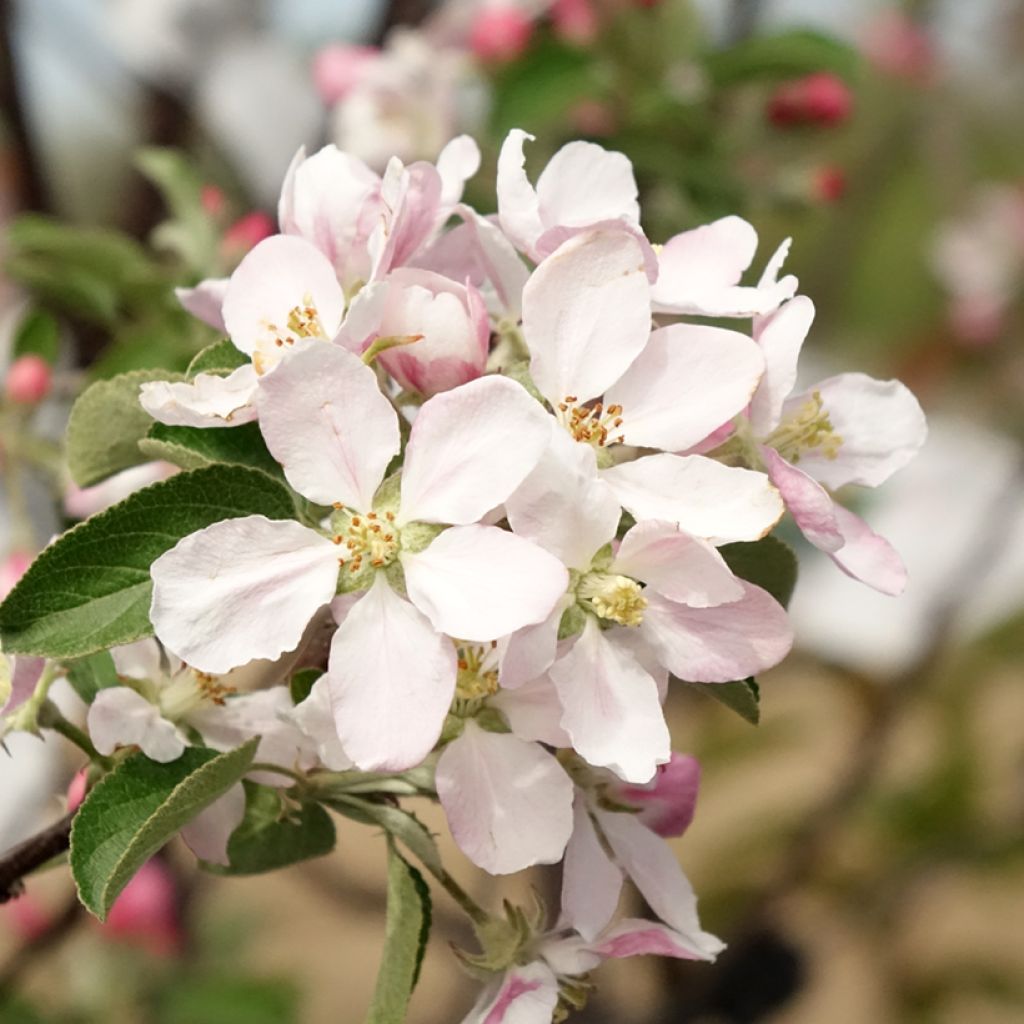

Apple Tree Reinette de Caux - Malus domestica
Apple Tree Reinette de Caux - Malus domestica
Malus domestica Reinette de Caux
Apple, Orchard apple, Table apple, Cultivated apple
Produit parfait, mais il manque quelques informations sur le type de porte greffe. Merci
Thierry P., 28/03/2018
Special offer!
Receive a €20 voucher for any order over €90 (excluding delivery costs, credit notes, and plastic-free options)!
1- Add your favorite plants to your cart.
2- Once you have reached €90, confirm your order (you can even choose the delivery date!).
3- As soon as your order is shipped, you will receive an email containing your voucher code, valid for 3 months (90 days).
Your voucher is unique and can only be used once, for any order with a minimum value of €20, excluding delivery costs.
Can be combined with other current offers, non-divisible and non-refundable.
Home or relay delivery (depending on size and destination)
Schedule delivery date,
and select date in basket
This plant carries a 6 months recovery warranty
More information
We guarantee the quality of our plants for a full growing cycle, and will replace at our expense any plant that fails to recover under normal climatic and planting conditions.
Description
Malus 'Reinette de Caux' is a vigorous variety that is highly productive. It bears beautiful round flattened fruits that are harvested from mid-October to early November and consumed from January onwards. Their skin has a lovely golden yellow colour streaked with red by the sun. It contains firm, fine, and juicy pale yellow-white flesh. It has a sweet and slightly tart flavour, with a hint of fragrance. It is an ideal apple for pastries, and goes well in pies and cakes. It is also used to make cider. Stored in good conditions, this apple keeps well and can be consumed until April.
This hardy variety can withstand temperatures as low as -20°C (-4°F). It usually blooms in the second half of April. It is not a self-fertile variety. To ensure fruiting, it should be planted near other varieties for pollination, such as 'Reine des Reinettes',
Malus domestica belongs to the Rosaceae family. It is cultivated almost everywhere in the world. It includes countless varieties, both old and modern, that produce apples of varying sizes and flavours, ranging from sweet to tart. Apple trees are native to Europe, where their presence has been documented since ancient times.
In spring, the apple tree bears white or pinkish-white flowers grouped in corymbs. Apple flowers consist of 5 petals, with these white flowers surrounding a core composed of about 20 stamens. They give rise to spherical fleshy fruits (drupes, from a botanical perspective) that are filled with seeds. Their colour, size, flavour, and shelf life vary depending on the variety. Apples are harvested in late summer and autumn, and can sometimes be stored for a long period in a cellar and consumed until early spring. Apples lend themselves to a wide range of culinary preparations (compotes, pies, jellies), but can also be used to make apple juice or cider. Apple leaves are deciduous and arranged alternately on the branches. Their lamina is ovate and toothed. They have a dark green upper surface and a whitish lower surface that is slightly fuzzy.
Apple trees can be grown in all climates, but particularly thrive in temperate regions. They thrive in full sun and in reasonably moist and fertile soil. They are traditionally planted in the heart of an orchard, but can also be grown as standalone trees or even in hedges.
They do not exceed 10m (33ft) in height, with a similar width. This size can be much smaller depending on the vigour of the rootstock used. It typically has a tall trunk that naturally spreads out. It comes in various forms (goblet, half-standard, standard, etc.) and can be trained in numerous ways (column, cordon, espalier, etc.).
Apple Tree Reinette de Caux - Malus domestica in pictures
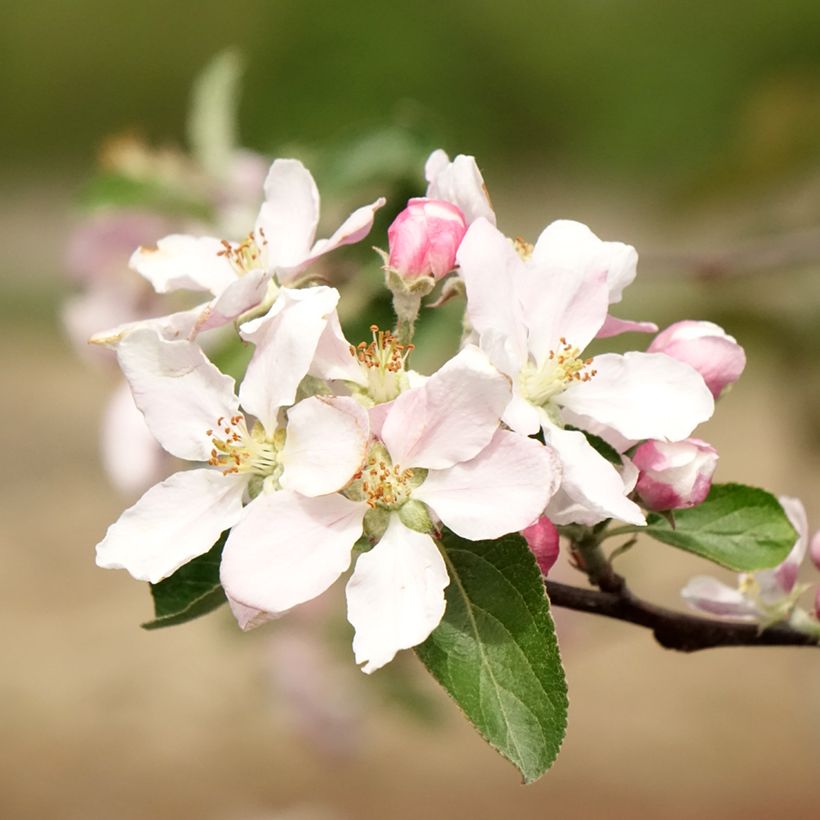

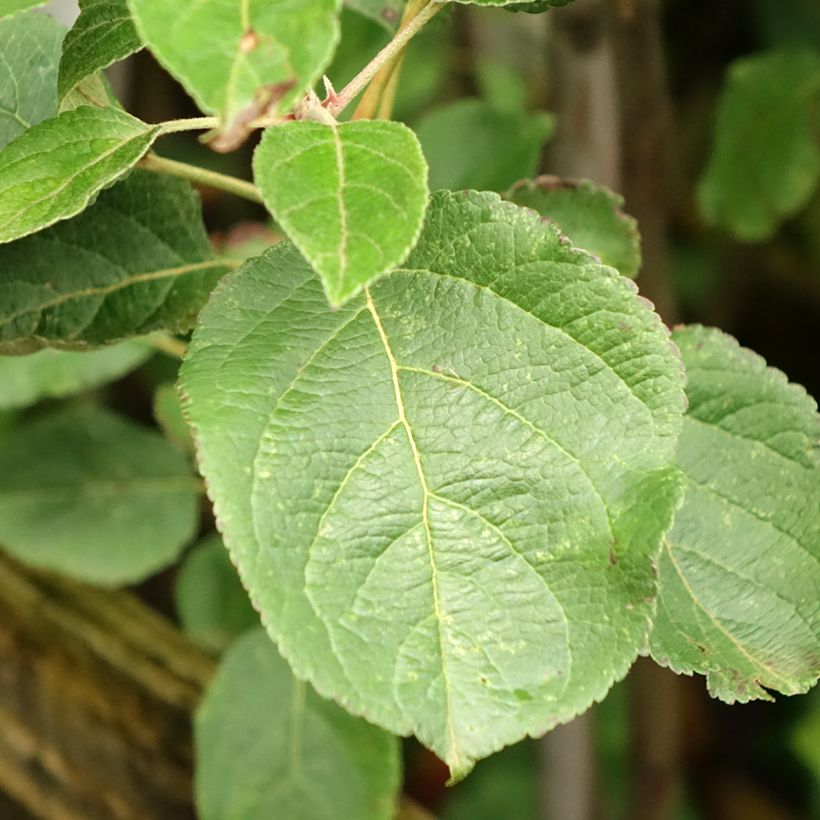

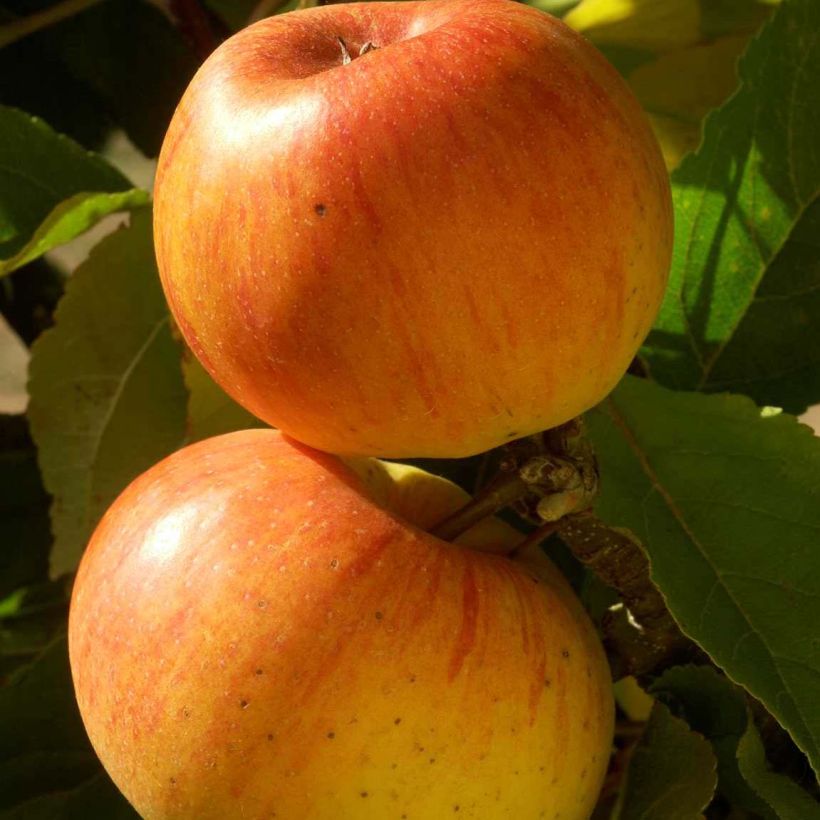

Plant habit
Fruit
Flowering
Foliage
Botanical data
Malus
domestica
Reinette de Caux
Rosaceae
Apple, Orchard apple, Table apple, Cultivated apple
Cultivar or hybrid
Other Apple trees
View all →Planting and care
Choose a sunny location. The soil can be slightly chalky or acidic, but not excessively so. Dig a wide planting hole at least 3 times the volume of the root ball. Add organic matter (topsoil, compost) and a base fertiliser, such as crushed horn. Do not bury the graft collar. Water abundantly, even in rainy winter. Fruit trees are ideally planted between October and March, outside of the freezing period. Container-grown plants can be planted all year round, except during periods of high heat or frost.
During winter, you can add a small handful of wood ash, which is rich in potash. This will improve fruiting.
Apple trees can be subject to various diseases and pests. In order to limit risks, space the trees sufficiently. You can also plant multi-species hedges and install nesting boxes or insect hotels to attract beneficial insects. In summary: prioritize diversity.
The main diseases of apple trees are scab (brown spots on leaves), brown rot (wilting of flowers and rotting of fruits on the tree), and powdery mildew (white powdery coating on leaves). For these three cases, preventive action is preferred by spraying a decoction of horsetail.
As for pests, the codling moth (or fruit worm) is a small caterpillar, resulting from the laying of a butterfly, which causes holes inside the fruit. Encourage birds and bats into your garden to feast on this pest! In case of aphid infestation, spray a solution based on black soap.
During the harvest, only keep the picked fruits. Store the apples on shelves or in crates with their stem facing downwards. Choose a preferably completely dark, dry and cool place that is frost-free.
Planting period
Intended location
Care
Planting & care advice
-
, onOrder confirmed
Reply from on Promesse de fleurs
Similar products
Haven't found what you were looking for?
Hardiness is the lowest winter temperature a plant can endure without suffering serious damage or even dying. However, hardiness is affected by location (a sheltered area, such as a patio), protection (winter cover) and soil type (hardiness is improved by well-drained soil).

Photo Sharing Terms & Conditions
In order to encourage gardeners to interact and share their experiences, Promesse de fleurs offers various media enabling content to be uploaded onto its Site - in particular via the ‘Photo sharing’ module.
The User agrees to refrain from:
- Posting any content that is illegal, prejudicial, insulting, racist, inciteful to hatred, revisionist, contrary to public decency, that infringes on privacy or on the privacy rights of third parties, in particular the publicity rights of persons and goods, intellectual property rights, or the right to privacy.
- Submitting content on behalf of a third party;
- Impersonate the identity of a third party and/or publish any personal information about a third party;
In general, the User undertakes to refrain from any unethical behaviour.
All Content (in particular text, comments, files, images, photos, videos, creative works, etc.), which may be subject to property or intellectual property rights, image or other private rights, shall remain the property of the User, subject to the limited rights granted by the terms of the licence granted by Promesse de fleurs as stated below. Users are at liberty to publish or not to publish such Content on the Site, notably via the ‘Photo Sharing’ facility, and accept that this Content shall be made public and freely accessible, notably on the Internet.
Users further acknowledge, undertake to have ,and guarantee that they hold all necessary rights and permissions to publish such material on the Site, in particular with regard to the legislation in force pertaining to any privacy, property, intellectual property, image, or contractual rights, or rights of any other nature. By publishing such Content on the Site, Users acknowledge accepting full liability as publishers of the Content within the meaning of the law, and grant Promesse de fleurs, free of charge, an inclusive, worldwide licence for the said Content for the entire duration of its publication, including all reproduction, representation, up/downloading, displaying, performing, transmission, and storage rights.
Users also grant permission for their name to be linked to the Content and accept that this link may not always be made available.
By engaging in posting material, Users consent to their Content becoming automatically accessible on the Internet, in particular on other sites and/or blogs and/or web pages of the Promesse de fleurs site, including in particular social pages and the Promesse de fleurs catalogue.
Users may secure the removal of entrusted content free of charge by issuing a simple request via our contact form.
The flowering period indicated on our website applies to countries and regions located in USDA zone 8 (France, the United Kingdom, Ireland, the Netherlands, etc.)
It will vary according to where you live:
- In zones 9 to 10 (Italy, Spain, Greece, etc.), flowering will occur about 2 to 4 weeks earlier.
- In zones 6 to 7 (Germany, Poland, Slovenia, and lower mountainous regions), flowering will be delayed by 2 to 3 weeks.
- In zone 5 (Central Europe, Scandinavia), blooming will be delayed by 3 to 5 weeks.
In temperate climates, pruning of spring-flowering shrubs (forsythia, spireas, etc.) should be done just after flowering.
Pruning of summer-flowering shrubs (Indian Lilac, Perovskia, etc.) can be done in winter or spring.
In cold regions as well as with frost-sensitive plants, avoid pruning too early when severe frosts may still occur.
The planting period indicated on our website applies to countries and regions located in USDA zone 8 (France, United Kingdom, Ireland, Netherlands).
It will vary according to where you live:
- In Mediterranean zones (Marseille, Madrid, Milan, etc.), autumn and winter are the best planting periods.
- In continental zones (Strasbourg, Munich, Vienna, etc.), delay planting by 2 to 3 weeks in spring and bring it forward by 2 to 4 weeks in autumn.
- In mountainous regions (the Alps, Pyrenees, Carpathians, etc.), it is best to plant in late spring (May-June) or late summer (August-September).
The harvesting period indicated on our website applies to countries and regions in USDA zone 8 (France, England, Ireland, the Netherlands).
In colder areas (Scandinavia, Poland, Austria...) fruit and vegetable harvests are likely to be delayed by 3-4 weeks.
In warmer areas (Italy, Spain, Greece, etc.), harvesting will probably take place earlier, depending on weather conditions.
The sowing periods indicated on our website apply to countries and regions within USDA Zone 8 (France, UK, Ireland, Netherlands).
In colder areas (Scandinavia, Poland, Austria...), delay any outdoor sowing by 3-4 weeks, or sow under glass.
In warmer climes (Italy, Spain, Greece, etc.), bring outdoor sowing forward by a few weeks.


































